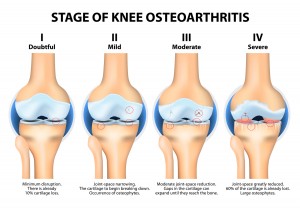Osteoarthritis
Osteoarthritis is a term used to describe the degradation or “wear and tear” of joints. It is the most common type of arthritis, and often occurs with age.
Wear and tear on the joints over time can result in gradual deterioration of the smooth, slippery surface of joints which are made to allow for seamless movement. When joint cartilage becomes rough, resulting in increased friction, it eventually deteriorates, leaving bones contacting one another and causing bad joint pain.
Some associations of Osteoarthritis include:
• Bone Spurs – these are extra bits of bone which feel like hard lumps
• Lack of Flexibility – inability to move the joint fully
• Joint Stiffness and muscle aches
Osteoarthritis can affect most joints but are most common in the knees, hips and spine.

Home remedies, such as over-the-counter gels, hot and cold packs, glucosamine supplements, and bracing can provide some relief.
As part of the diagnostic process a doctor may run a number of tests such as:
• Joint fluid analysis – to exclude the presence of infection or gout.
• X-rays – which can show gaps or narrowing of bones which indicate loss of cartilage. They can also show bone spurs.
• Blood Test – blood tests can rule out infections, deficiencies, and other causes of joint pain
• Magnetic Resonance Imaging – this type of imaging can actually show the cartilage and
connective tissues to confirm the presence of Osteoarthritis.
Treatment for Osteoarthritis
• Physiotherapy
Physical Therapists can help teach exercises to help strengthen the muscles surrounding
the joint and improve mobility. They can also help the patient prevent further
injury. They can also help a patient make environmental or lifestyle
modifications in order to maintain good day-to-day functioning.
• Knee Braces – keeping a brace around the knee can help immobilize the joint as
well as reduce pain and inflammation. However comfort and practicality often become issues with long term use.
• Knee Injections – While the results may not last long, taking into account the potential risks of infection and bleeding, corticosteroid and visco-supplementation injections can sometimes help to reduce pain and inflammation of osteoarthritis.
Joint replacement surgery is unfortunately relatively common these days, and involves replacing the joint structures using an artificial joint.
Thankfully medical advances have brought about a number of very good non invasive and joint repair options in recent years.
If you are suffering from knee osteoarthritis, or if your condition has not improved despite standard treatments and have been told to consider knee replacement surgery,
simply call us at +65 6732 2397 or leave a message below for Dr Tan to discuss a customized non-invasive solution for you.




